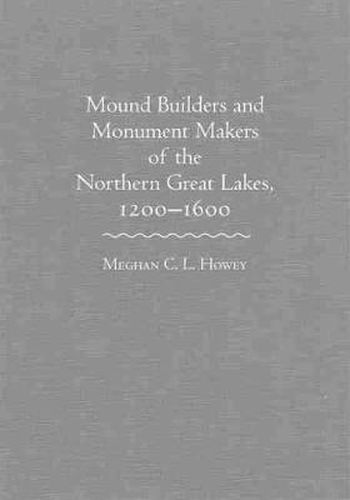Readings Newsletter
Become a Readings Member to make your shopping experience even easier.
Sign in or sign up for free!
You’re not far away from qualifying for FREE standard shipping within Australia
You’ve qualified for FREE standard shipping within Australia
The cart is loading…






Rising above the northern Michigan landscape, prehistoric burial mounds and impressive circular earthen enclosures bear witness to the deep history of the region’s ancient indigenous peoples. These mounds and earthworks have long been treated as isolated finds and have never been connected to the social dynamics of the time in which they were constructed, a period called Late Prehistory.
In Mound Builders and Monument Makers of the Northern Great Lakes, 1200-1600, Meghan C. L. Howey uses archaeology to make this connection. She shows how indigenous communities of the northern Great Lakes used earthen structures as gathering places for ritual and social interaction, which maintained connected egalitarian societies in the process.
Examining
every available ceramic sherd from every northern earthwork,
Howey combines regional archaeological investigations with ethnohistory, analysis of spatial relationships, and collaboration with tribal communities to explore changes in the area’s social setting from 1200 to 1600. During this time, cultural shifts, such as the adoption of maize horticulture, led to the creation of the earthen constructions. Burial mounds were erected, marking claims to resources and defining areas for local ritual gatherings, while massive circular enclosures were constructed as intersocietal ceremonial centers. Together, Howey shows, these structures made up part of an interconnected, purposefully designed cultural landscape. When societies incorporated the earthworks into their egalitarian social and ritual behaviors, the structures became something more: ceremonial monuments.
The first systematic examination of earthen constructions in what is today Michigan, Mound Builders and Monument Makers of the Northern Great Lakes, 1200-1600 reveals complicated indigenous histories that played out in the area before European contact. Howey’s richly illustrated investigation increases our understanding of the diverse cultures and dynamic histories of the pre-Columbian ancestors of today’s Great Lake tribes.
$9.00 standard shipping within Australia
FREE standard shipping within Australia for orders over $100.00
Express & International shipping calculated at checkout
Rising above the northern Michigan landscape, prehistoric burial mounds and impressive circular earthen enclosures bear witness to the deep history of the region’s ancient indigenous peoples. These mounds and earthworks have long been treated as isolated finds and have never been connected to the social dynamics of the time in which they were constructed, a period called Late Prehistory.
In Mound Builders and Monument Makers of the Northern Great Lakes, 1200-1600, Meghan C. L. Howey uses archaeology to make this connection. She shows how indigenous communities of the northern Great Lakes used earthen structures as gathering places for ritual and social interaction, which maintained connected egalitarian societies in the process.
Examining
every available ceramic sherd from every northern earthwork,
Howey combines regional archaeological investigations with ethnohistory, analysis of spatial relationships, and collaboration with tribal communities to explore changes in the area’s social setting from 1200 to 1600. During this time, cultural shifts, such as the adoption of maize horticulture, led to the creation of the earthen constructions. Burial mounds were erected, marking claims to resources and defining areas for local ritual gatherings, while massive circular enclosures were constructed as intersocietal ceremonial centers. Together, Howey shows, these structures made up part of an interconnected, purposefully designed cultural landscape. When societies incorporated the earthworks into their egalitarian social and ritual behaviors, the structures became something more: ceremonial monuments.
The first systematic examination of earthen constructions in what is today Michigan, Mound Builders and Monument Makers of the Northern Great Lakes, 1200-1600 reveals complicated indigenous histories that played out in the area before European contact. Howey’s richly illustrated investigation increases our understanding of the diverse cultures and dynamic histories of the pre-Columbian ancestors of today’s Great Lake tribes.